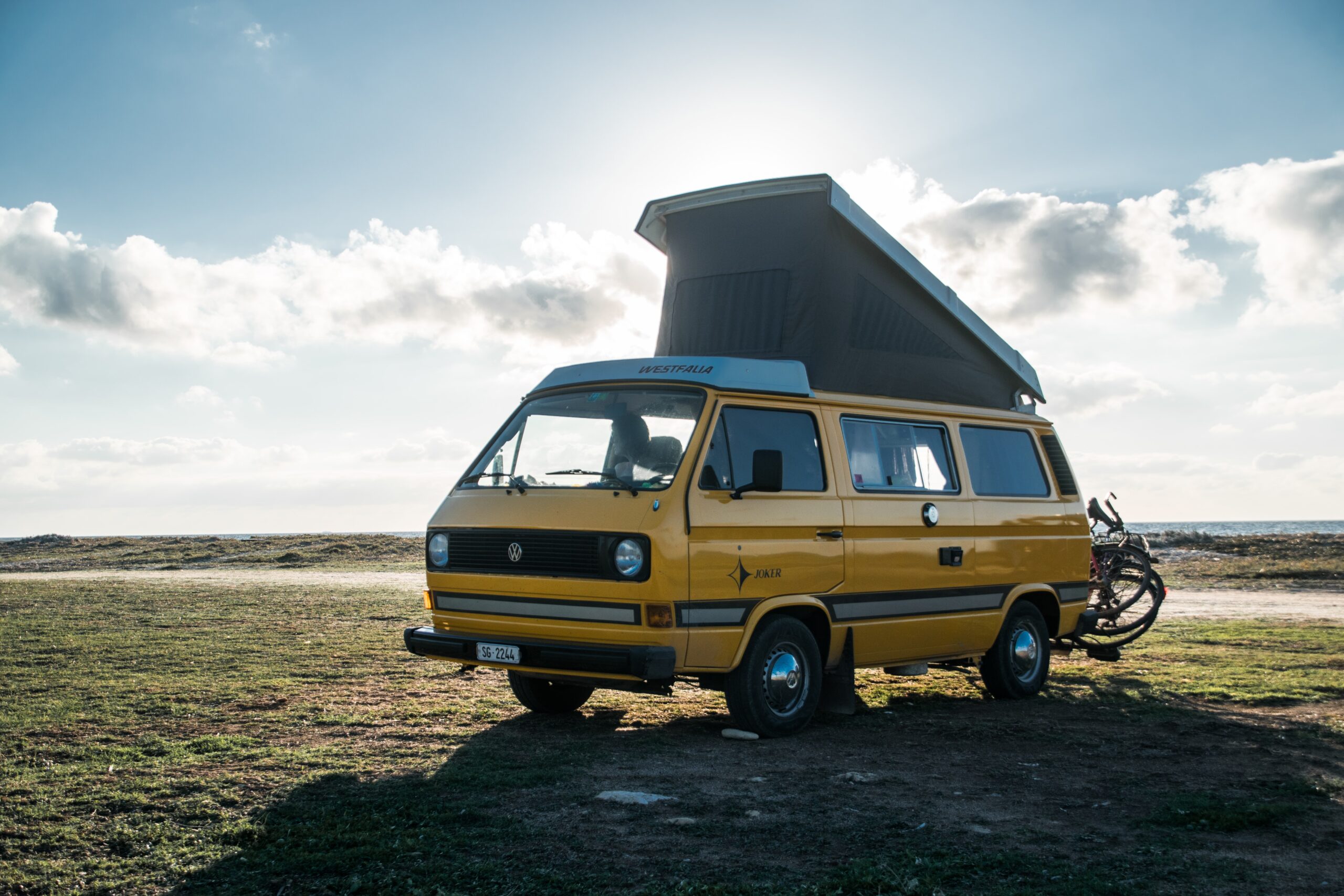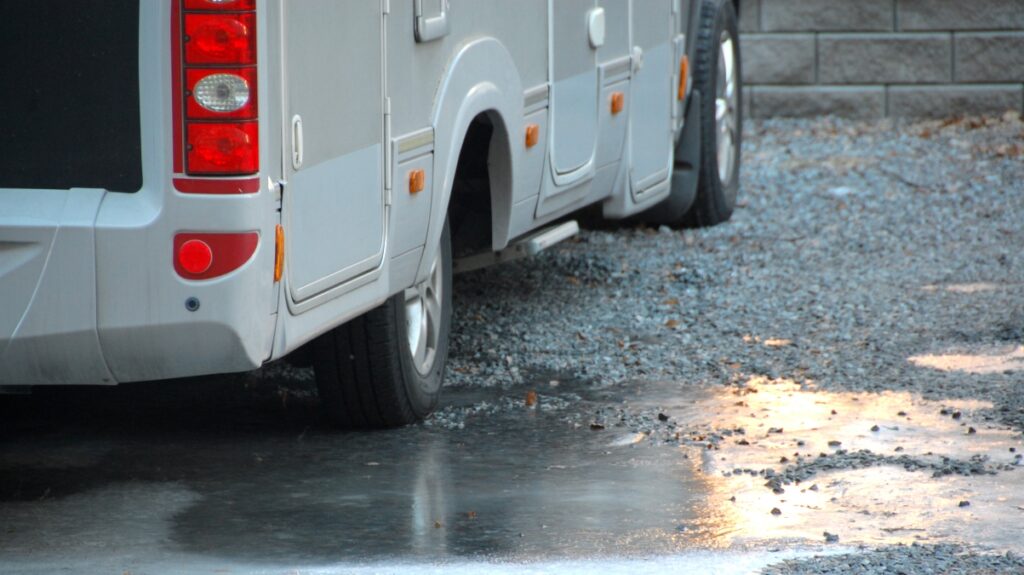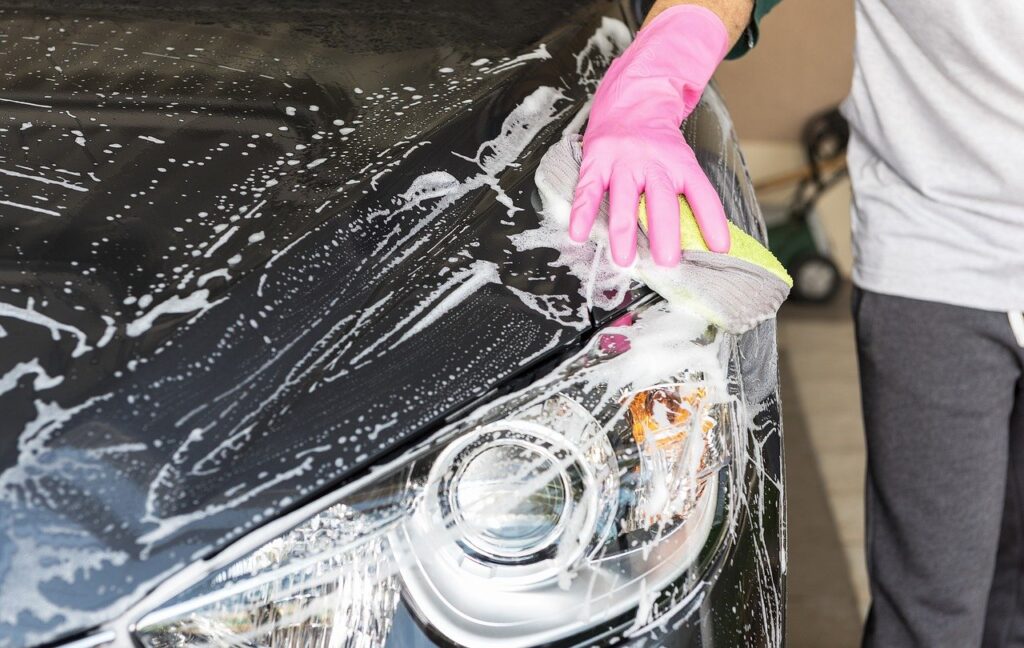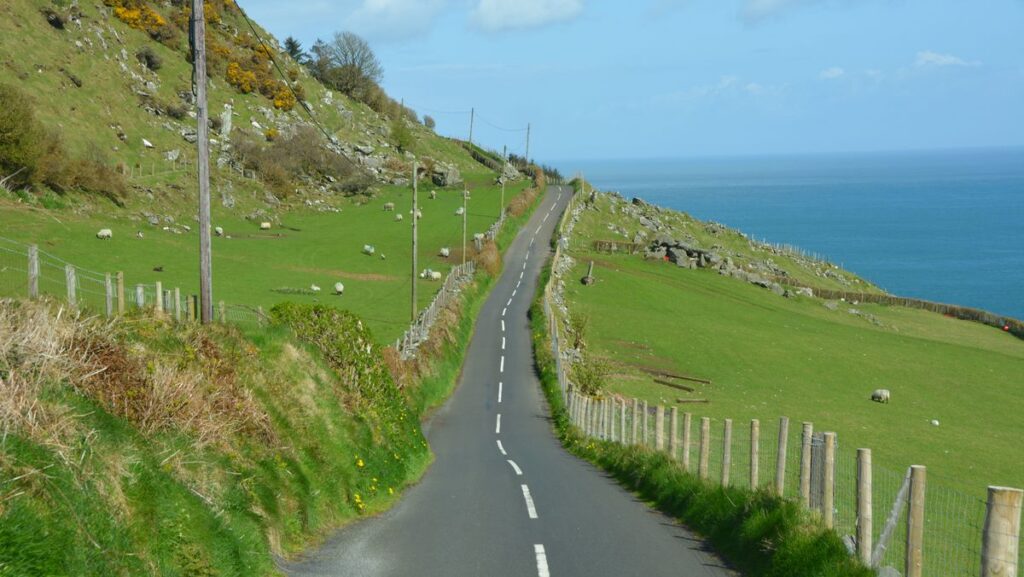50% discount for the first 100 vehicles: Only 10% service fee for one year. Register now!
Take the motorhome or caravan out of the winter storage – time for spring cleaning!
, Dec 21, 2022, Reading time: 8 min
Reading time: 8 min

• • •
When the spring sun peeks out and the snow melts away, it finally is time to take the motorhome or caravan out of winter storage. Here you will find tips on what to think about when getting your camping vehicle ready for the season.
Time to wake up the motorhome or caravan from winter slumber
Are you one of those who put away the motorhome or caravan during the coldest months of the year? Whether you store your vehicle indoors or outdoors, you’re sure to look forward to spring, when it’s time to brush off the dust and get the vehicle ready for the open roads.
Do you perhaps remember how you took care of the motorhome or caravan before putting it away to winter storage? Otherwise, you can refresh your memory by reading about winter storage of a motorhome or caravan. Now, when it’s time to roll out of the winter storage, you can start by making the vehicle roadworthy again:
- If you have a motorhome: End the off road notification so that your full insurance applies.
- Check if you need to refuel (diesel or petrol).
- If you disconnected the batteries: Connect them again.
- If you took out the gas tubes: Put them back in the camping vehicle and plug them in.
- Close the refrigerator and other doors that have been open during the winter.

Check the condition of the motorhome/caravan
After a whole winter when the motorhome or caravan has been stationary, it is advisable to check its condition. Some things you can do yourself, and other things you may need help with from a workshop.
Inspection and checks you can do yourself
To begin with, you can inspect the vehicle on your own. Here are some things to go through:
- Inspect the vehicle to see if you can find problems that have occurred, such as damage by mice, water leaks or mould.
- Check tire pressure and tire tread depth (see below).
- Check the gas equipment, so that the hoses and pipes fit properly and that nothing looks worn.
- Test that the vehicle’s lighting works, such as turn signals and brake lights.
- Check if you need to fill up different fluids: Adblue, oil, windshield washer liquid, coolant and chemicals for the toilet cassette.
Tire pressure
Which tire pressure is right for your tires depends on which tires you have, what the motorhome weighs and how the weight is distributed between the front and rear axles. Once you have this information, you can use a tire pressure chart (ring pressure chart), which you get from your tire dealer, to know what pressure is right. Another option, if you are not as meticulous, is to fill the tires to the maximum allowable pressure in the rear wheels and the motorhome builder’s recommendation in the front wheels. You can check and adjust the tire pressure yourself at a petrol station.
Tire tread depth
In summer road conditions, tires must have a tread depth of at least 1.6 mm, but the depth should preferably be at least 3 mm to provide good friction on wet roads. In the case of winter road conditions, slightly different rules apply in the various Nordic countries.
Rules for winter road conditions in Sweden
For winter road conditions i Sweden, the vehicle must have winter tires or equivalent equipment from 1st of December to 31st of March if it is winter road conditions. If your motorhome weighs a maximum of 3.5 tonnes, the tread depth must be at least 3 mm, and if it weighs more, the tread depth must be at least 5 mm. The requirement for winter tires also applies to trailers towed by vehicles with a maximum total weight of 3.5 tonnes.
Rules for winter road conditions in Norway
In Norway, winter tires with a tread depth of at least 3 mm are required between 1st of November and the first Sunday after Easter for vehicles up to 3.5 tonnes, as well as for motorhomes up to 7.5 tonnes. For Nordland, Troms and Finnmark, 3 mm tread depth is required between 16th of October and 30th of April. The requirement for winter tires also applies to trailers with a maximum total weight of 3.5 tonnes.
Rules for winter road conditions in Finland
In Finland, winter tires must be used from the beginning of November to the end of March if the weather or road conditions require it. Winter tires must be used on cars with a maximum weight of 3.5 tonnes and the tread depth must be at least 3 mm. The requirement for winter tires also applies to trailers with a maximum total weight of 3.5 tonnes.

Inspection and checks at the workshop
Check if your camping vehicle needs an official inspection. Keep in mind that LPG (Gasol) control is no longer included in the mandatory inspection of motorhomes and caravans. In order to be sure that the LPG equipment is safe and works as it should, you yourself must therefore book in and pay extra for a LPG check. During a LPG inspection, the workshop carefully goes through the gas equipment, and after that a leak test is carried out.
Spring clean the motorhome/caravan
After a long winter when the motorhome or caravan has not been used, it may happen that the vehicle feels closed in or that the air is a little musty. Then it usually feels nice with a thorough spring cleaning. In addition, it is convenient to take the opportunity to do an extra thorough cleaning now, when you may not have that much stuff in the vehicle.
- Shake mattresses, covers, pillows, blankets and other textiles outside in the fresh air.
- Vacuum everywhere, even under beds and in other places where it can normally be difficult to access.
- Wet-wipe tables, cabinets and other surfaces.
- Clean the kitchen and bathroom thoroughly.

Wash the motorhome/caravan
Spring is also a perfect opportunity to wash the outside of the motorhome or caravan. When you wash a motorhome or caravan, you have to think about being careful in a different way than when you wash a regular car. Camping vehicles can be glued with agents that don’t withstand strong solvents, and you should therefore use detergents specifically intended for motorhomes and caravans. If you use a high pressure washer, you must do so with care, and avoid spraying too close to or against ventilation grilles and joints.
As motorhomes can be higher than normal cars, you also need to find a suitable place for the washing. You can do the washing at some campsites, but also at some car washes that have places with extra high ceilings. Washing in the driveway at home is not suitable because the cleaning agents can damage the environment. Here you can read even more about cleaning and washing motorhomes and caravans.

Get the motorhome or caravan ready for the first trip of the spring
When your motorhome or caravan feels clean and spring-fine, it’s time to get it ready for the first trip of the year – regardless of wether you plan to sett off yourself or rent out your vehicle. Here is what you need to do to be ready:
- Fill the fresh water tank with fresh water.
- If you have a water heater: Fill it up by turning on the heater and the water, and open the taps.
- Check that there is LPG, or fill the gas tubes.
- Pour some chemical liquid into the toilet cassette to reduce odours.
- Check that the warning triangle and reflective vest are in the appropriate place.
- If you are going to rent out the vehicle: Go through your equipment list so you know everything is there and working as it should.
- If necessary, fill in other things that you want to have in the camping vehicle, such as washing-up liquid, cleaning agents, garbage bags and other basic goods.
If you plan to rent out your motorhome or caravan, you can read even more here about how to become a top owner at MyCamper, and how to succeed with your first check-in.

Go on a trip – or take the opportunity to rent out!
Maybe you want to go on an early trip yourself and enjoy the first spring sun. If you have other plans – take the opportunity to rent out your motorhome or caravan! Now that the vehicle is cleaned and washed, you have a perfect opportunity to take new photos. Register your vehicle for rental at MyCamper.com or update and activate your advertisement!

Newest articles
No articles found